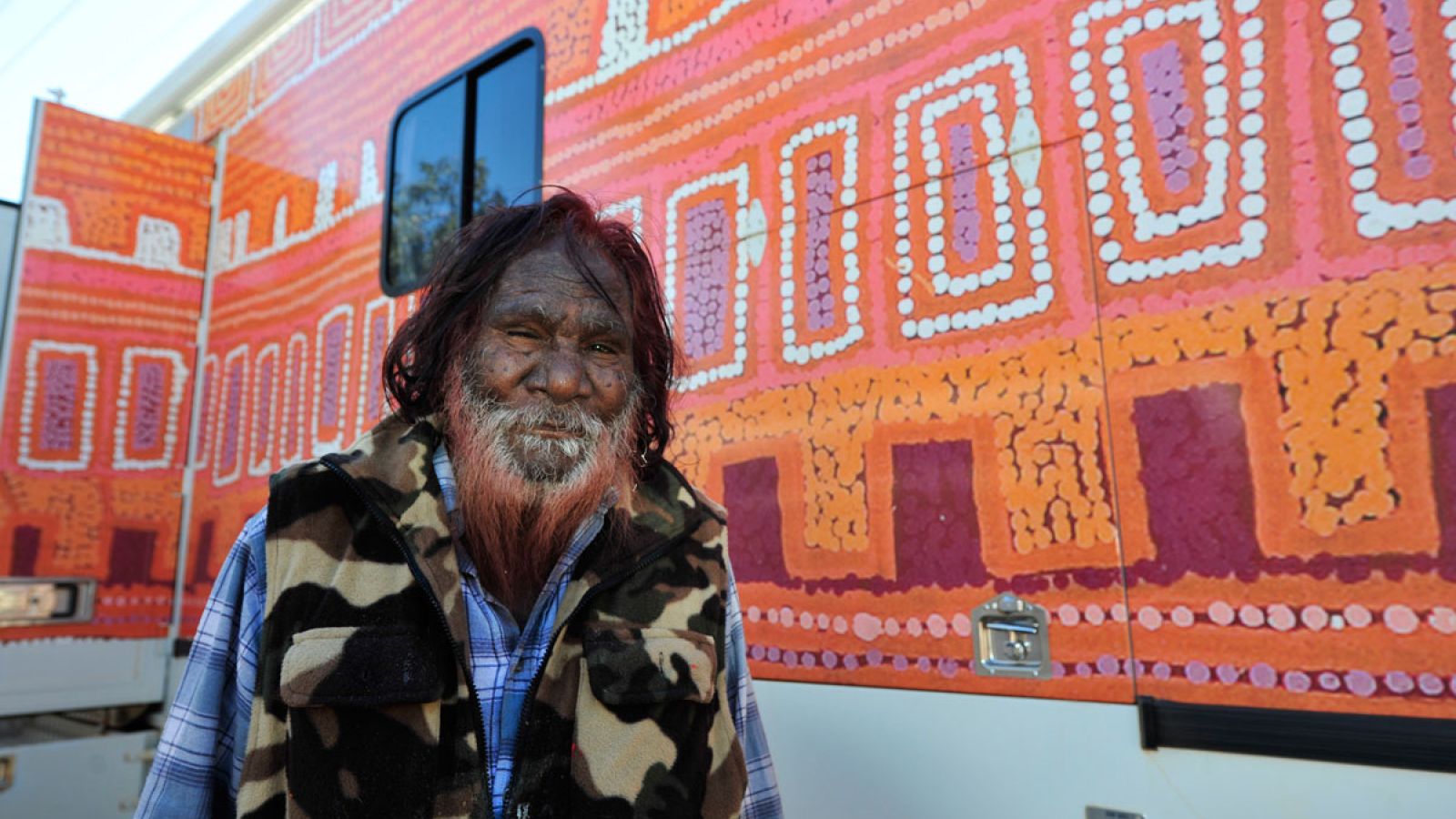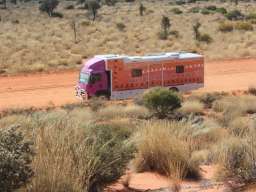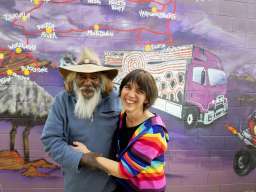Artist’s story represents broader issues in Indigenous health

Patrick Tjungurrayi and his painting on the side of the Purple Truck. Photo Courtesy Wayne Quilliam Photography.
Part biography, part art history, a new book celebrating the life and art of influential Indigenous artist Patrick Tjungurrayi is helping to raise money and the profile of Indigenous health issues.
Launched on Thursday, Patrick Tjungurrayi: Beyond Borders focuses on Patrick’s story and his involvement with the Purple House (officially named the Western Desert Nganampa Walytja Palyantjaku Tjutaku Aboriginal Corporation), which provides essential dialysis services to remote Indigenous communities in central Australia.
It’s a visually stunning production which includes many of Patrick’s works of art and photographs of life in the desert. But it’s about much more than art.
“Patrick has become a real poster boy for the remote dialysis services in central Australia through the Purple House,” says editor and ANU researcher Dr John Carty from the Research School of Humanities and the Arts. Carty has gotten to know Patrick well throughout his career as a researcher.
“He’s an important political figure in terms of what he represents, especially at this point in time, when the government is talking about shutting down some of these communities.“
Kidney failure is a major problem in desert communities, with difficulty in accessing treatment due to vast distances between medical centres compounding the problem. The Purple House helps to fill this gap, providing remote dialysis to patients across the Northern Territory, and into Western Australia.
All proceeds from the sale of the book will support the work of the Purple House in providing dialysis and essential support services to people in central Australia and beyond.
A community driven and funded initiative, Patrick was one of several Papunya Tula artists who helped to set up remote dialysis services when they raised over $1 million by auctioning their paintings in 2000. This helped fund a dialysis centre in Kintore in the Northern Territory, and the Purple House to deliver those services to other communities.
In 2009, Patrick became a patient himself when his kidneys began to fail. He was told his only option for treatment was Perth, 2,600 kilometres away, and that he couldn’t use the dialysis machine in Kintore, just 150 kilometres from his home community across the border in WA.
Eventually, the Purple House ensured that dialysis came to Kiwirrkurra where Patrick lives.
The Purple House runs a bus equipped with dialysis machines that travels hundreds of kilometres between remote communities, allowing patients to receive treatment in their own country.
“People feel healthy when they’re on their country and surrounded by their family – so that relationship between health and family and the land is really inseparable in Aboriginal health,” says Carty.
“The Purple House as an organisation is an expression of the will of people in central Australia to control their own destiny with regard to their health. They raised the money to set this organisation up by selling paintings – they didn’t wait for the government, they just did it.”
Providing health services to remote Indigenous communities in their home country is a challenging but vital aspect of Indigenous health.
“A lot programs are being underfunded or defunded because they’re not seen to be economically rational, but analysis conducted by Ernst & Young has shown that the Purple House model, keeping people on their Country, is a more cost effective way of delivering healthcare,” says Carty.
“But there’s a bigger argument here too. These historical factors impacting peoples’ health can be traced to the disruption that has occurred over the last 200 years through the process of colonisation.”
As the Australian government considers shutting down a number of remote communities under the premise that living there is “lifestyle choice”, Carty says the government has a historical and moral obligation to support these communities.
“People have a right to live on their country, it’s where they’re happiest and healthiest. It’s not a lifestyle choice, it’s a way of life.”
For information about the Purple House, the Purple House Fund and Patrick Tjungurrayi: Beyond Borders visit: http://www.bca.com.au/policy-agenda/purple-house



